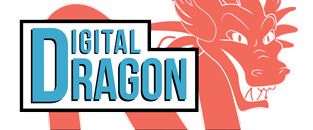Where and how are your kids learning? What does that space tell you about their success.
Learn about that Learning Space! How to build Community while Learning.
Continuing the thread of community building, this month we’re going to focus on the power harnessed through the design and use of space. Whether it be a traditional classroom, a more modern open space, or a Zoom room, we’re interacting with one another through designed spaces and our relationship to learning, work, and collaboration is being altered.
We can easily dial back the clock and reminisce over the tidy rows of desks in specific classrooms. This design predates all of us as it took root amidst the industrial revolution, yet unfortunately, we can more than likely observe the same industrialized feeling in learning environments within very close proximity to us. Here are some classic examples:
- Rows of desks.
- Question to ask: How does that encourage movement for either the educator or student?
- Compartmentalized facilities / departments.
- Question to ask: How might this hinder or nurture cross curricular objectives?
Onto the more modern spaces. This could resemble what one could imagine a job at an early stage startup might look like. Everything is on wheels! Stand, sit on a chair, or a yoga ball, the choice is yours. Just because a space doesn’t have walls doesn’t make it perfect. Again some classic examples:
- Wide open spaces.
- Question to ask: With everything ‘out there’, is there really a design by having “no set design”?
- Promoting interaction through eyelines.
- Question to ask: Interaction between our classmates and colleagues are hard scripted, so how do we encourage more of those moments organically through design?
Logging into the digital space. We’re all too familiar with this by now, and we’ve covered the negative effects of solely remote learning, including no down time, distractions, and less genuine interactions. However, for some instances, it still works. Also, technologies are all racing to figure this out.
- Standard “Zoom.”
- Question to ask: When focus is shattered, everything is a click away, and talking to turned off cameras is what we’re doing, how might we engage our friends and colleagues?
- VR environments.
- Question to ask: What does this environment offer that’s different from a Slack channel or Zoom room? Is it just shiny and when will that novelty wear off?
One of the reasons these questions are so difficult and why we continue to design and redesign spaces is because the spaces we occupy don’t work for everyone at the same time. Teams, classes, cohorts, and colleagues change, so nature so much our environment. It’s really about matching the design to who is in it.
TLDR; While we’re at a time where spaces to collaborate are outdated, completely open, and on the cutting edge all at once, we must pay attention to the people in the space and what the objectives of putting those people together may be. Whether it be productivity, creativity, or learning, think about how we fill and share the spaces with one another and how we can leverage them to bolster community.
Digital Dragon classes change space and learning setups – based on the subjects. Sitting on the floor for robotics is the best! To learn more about our programs, reach out: info@digitaldragon.co
About the Author:
John Balash was instrumental in Digital Dragon’s launch in 2013 as its first Curriculum Director and is now back in the fold as a consultant on all the latest and greatest in tech education.This is John’s latest contribution to a monthly blog series we’ve launched, Tech News from the Frontier. John is the Director of Educational Engagement at Carnegie Mellon University’s Entertainment Technology Center. John has worked on educationally-focused initiatives with clients ranging from D.A.R.P.A. to Disney. Working from both sides of the desk, you can find John in classrooms and conferences around the world exploring new uses for technologies in learning environments.

